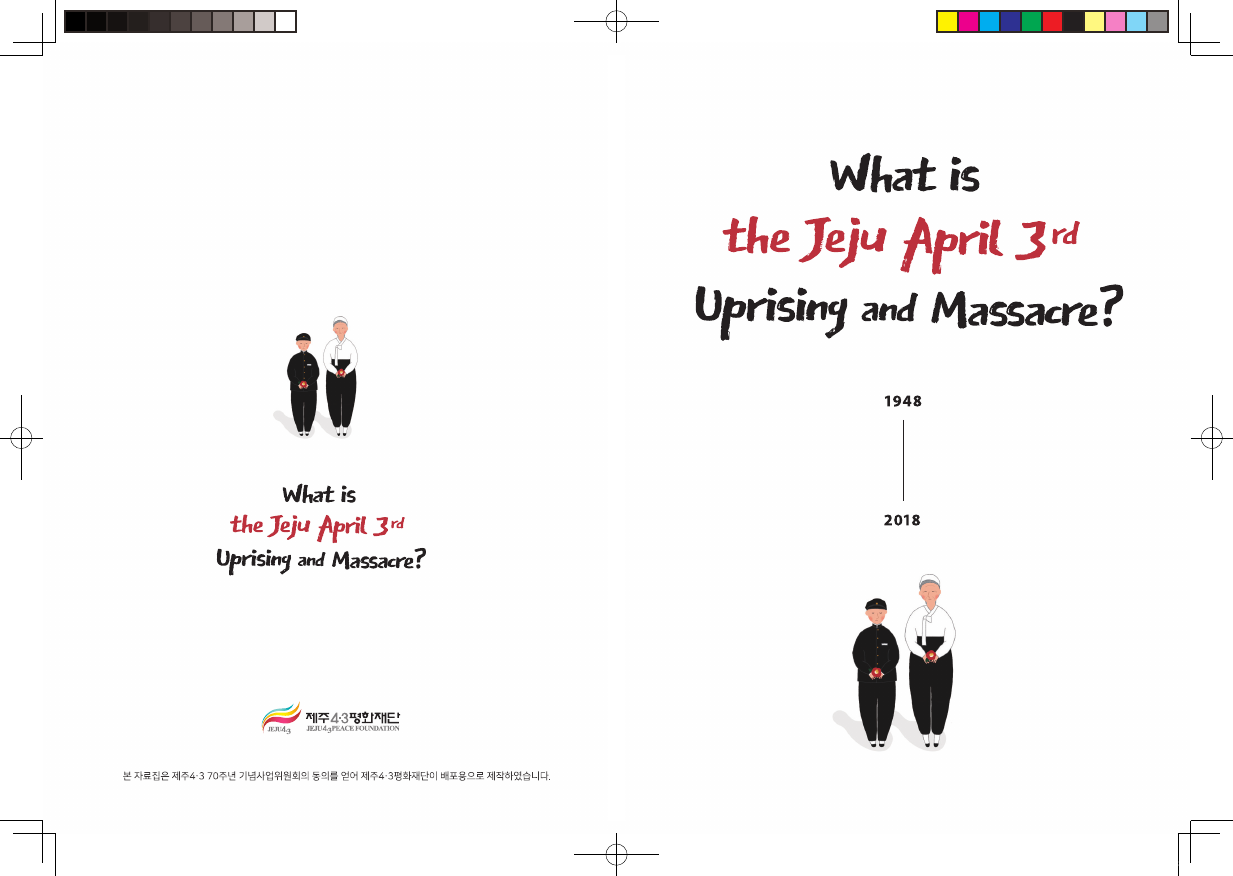
제주 43소책자 영문판 표지.indd 1
2018-03-05 오후 1:01:31
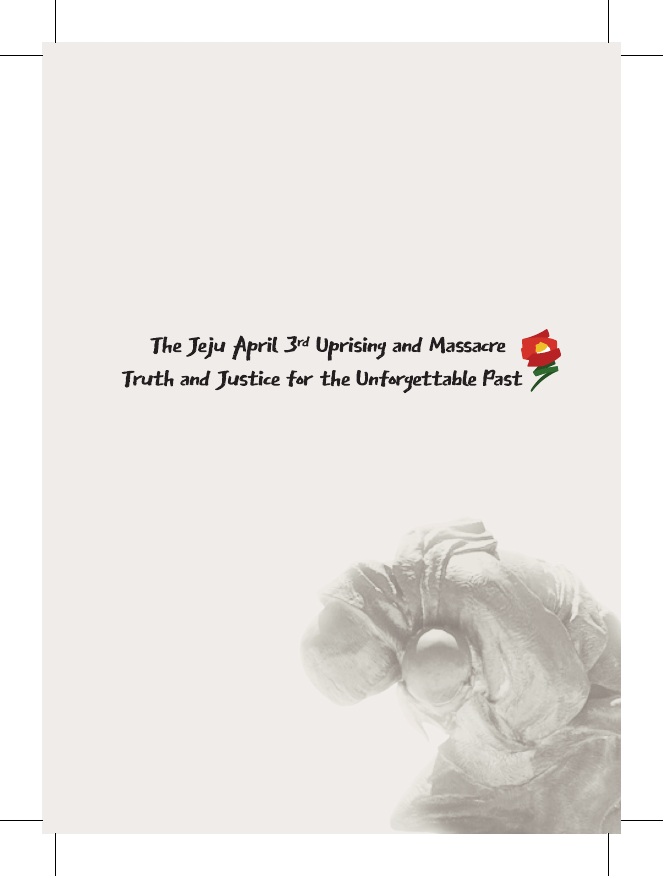
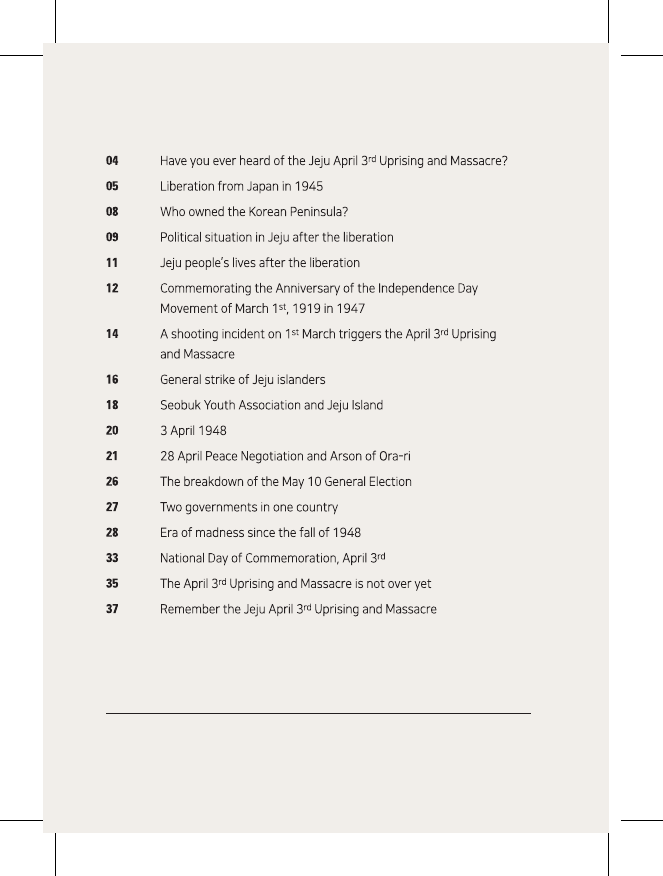
C O N T E N T S
* The romanization of Korean names in this book follows the <The Jeju 4·3 Incident Investigation
Report> of 2003. However, names as in the US national report in 1950s are also included in
bracket. All Korean names are transliterated in the standard fashion: last name first.
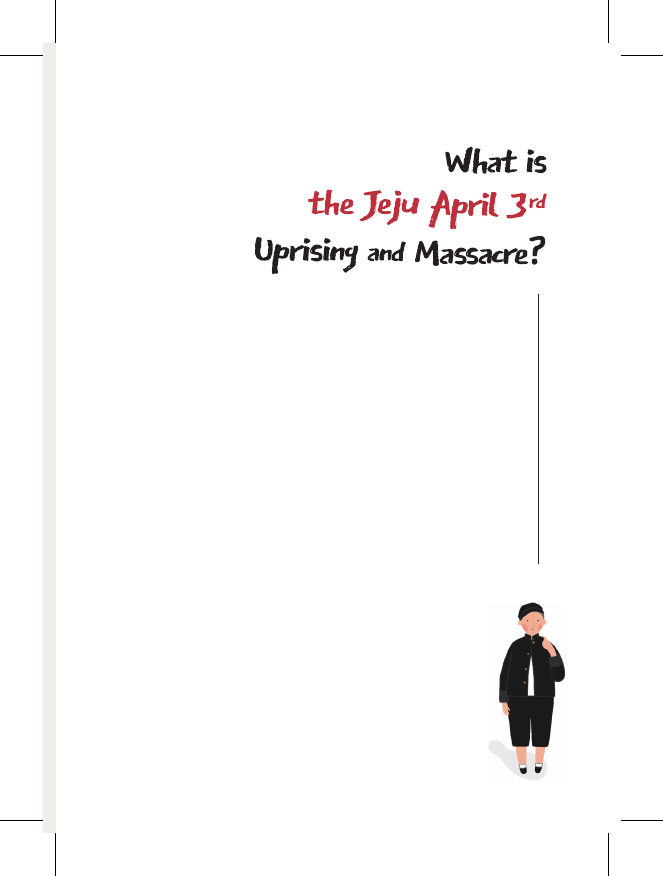

1948
2018
1948
20
04
Jeju is a beautiful island located in the southern part of Korea. It is well
known for its beautiful beaches and mountains, and one of the favouri-
te holiday destinations in South Korea. However, not many people are
aware that this island was covered by blood 70 years ago.
“The April 3rd Uprising and Massacre” is a tragic incident that happe-
ned between 1 March 1947 and 21 September 1954 on Jeju Island. It was a
chaotic period right after the independence from Japan, and the Korean
peninsula was entering into the Cold War era. Some people, including
the first president of South Korea and the US government, wanted to
establish a separate government in South Korea while others wanted to
establish a unified country with the North. Jeju islanders courageously
stood up against the division
of the Korean peninsula and
strongly protested against
the first election that formed
the Republic of Korea in the
South in 1948. Unfortunately,
military and police officers se-
verely cracked down on Jeju is-
landers. Approximately 30,000
people (10% of Jeju’s total po-
pulation) lost their lives during
this period. This booklet is
Taegeukgi (the national flag of Korea)
by Jung Younsung
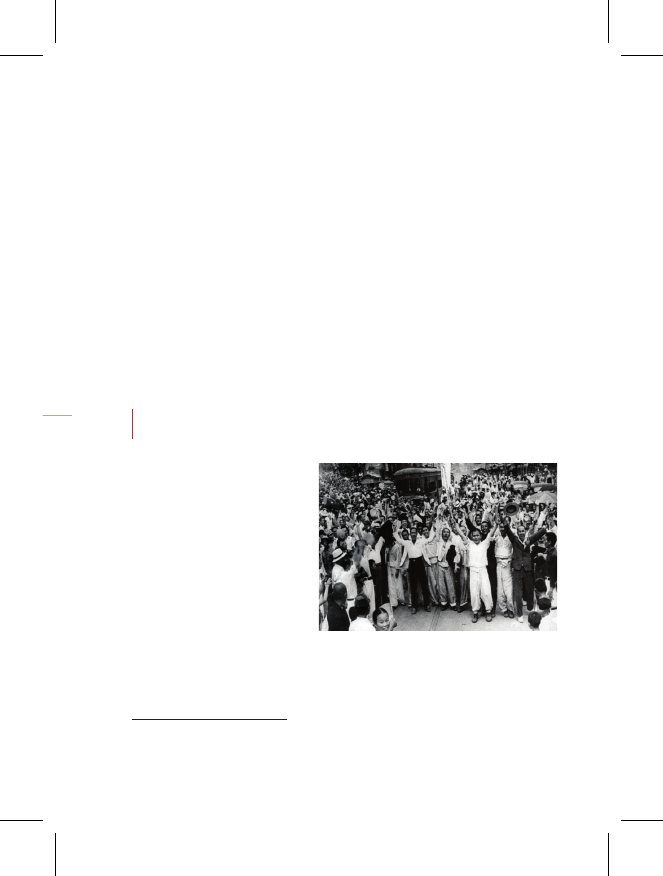
1948
2018
1948
20
05
about this tragic history.
Article 2 of the “Special Act on Discovering the Truth of the Jeju 4·3
Incident and the Restoration of Honor of Victims” defines the term “Jeju
4·3 Incident” as “an incident in which the lives of inhabitants were sacri-
ficed in the riot that arose on April 3, 1948, starting from March 1, 1947
and in the process of armed conflicts and suppression thereof that took
place in Jeju-do and the suppression thereof until September 21, 1954.”
Before we look into what happened during this period, it is necessary
to explore the background of the April 3rd Uprising and Massacre to un-
derstand its historical context.
Liberation from Japan in 1945
On 15 August 1945, Korea
became independent from
the 35-year rule of Japan’s
colonial empire. It was a
happy day for most people
as they were liberated from
conscription, forced labour,
and name changing progra-
mme.1) On the other hand,
Joy of liberation. Independence movement activists who
were detained in Seodaemun Prison cheer after being
released following liberation.
1) During the Japanese colonization, the Japanese government forced Koreans to change their
name into Japanese name.

1948
2018
1948
20
06
for those who colluded with Japan and who wanted to protect their
wealth by collaborating with the power, independence was a disturbing
moment. These different views among people were one of the causes of
tragic incidents after the independence. Both the Daegu Autumn Upri-
sing (1946) and Jeju April 3rd Uprising and Massacre (1948) happened wi-
thin 3 years after the independence, and the Korean War (1950) followed
around 5 years after the independence.
Why did independence bring
difficult times to Koreans?
There are many reasons for the tragic events that followed, such as
conflicts between the left and the right and/or the US and the Soviet
Union. However, the fundamental reason was that Koreans were not
able to gain independence with their own hands. As is well known, Ja-
pan was defeated by the Allied Forces during the Pacific War and they
lost control over the Korean peninsula. Korea became independent in
the due process. Koreans were not able to defeat Japan by themselves.
Then why did
the Allied Forces fight against Japan?
They fought against Japan, not because they sympathized with the
Koreans but they wanted to gain power in the Asia-Pacific region. The
Korean peninsula’s geopolitical situation was too crucial for many coun-
tries and therefore, the North was occupied by the Soviet Union while
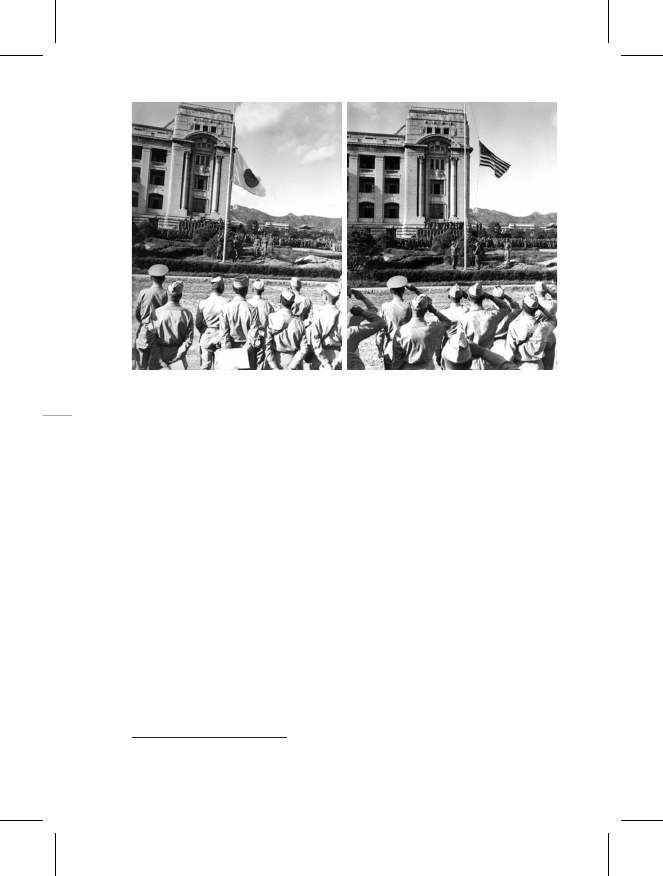
1948
2018
1948
20
07
the South was occupied by the US, even though it was not a defeated
country. It was unlike Germany, which was divided into two countries
after the WWII as a defeated country.
When they came to the Korean peninsula, the US Military Govern-
ment2) announced Proclamation No. 1 by General of the Army Douglas
MacArthur to the People of Korea, “All powers of Government over
the territory of Korea south of 38 degrees north latitude and the people
thereof will be for the present exercised under my authority.” And since
then, the US Military Government ruled the South for 3 years before the
Government of the Republic of Korea(South Korea) was established in
1948.
Japanese flag in front the Japanese Government-General of Korea is replaced by the US flag
2) Its full name is the United States Army Military Government in Korea(USAMGIK).
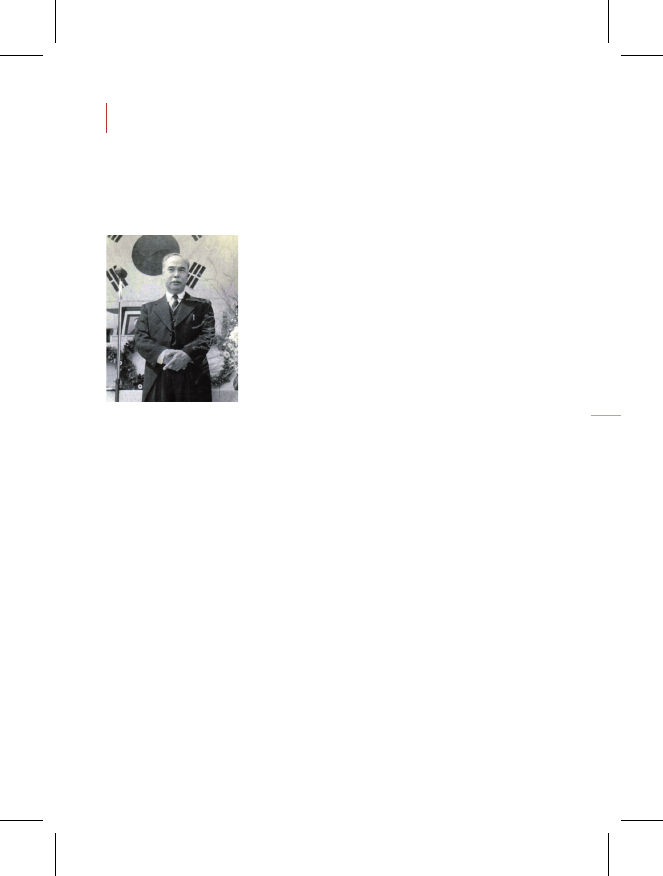
1948
2018
1948
20
08
Who owned the Korean Peninsula?
It was, of course, the land of Koreans. Therefore, the Koreans could
not let the US and the Soviet Union rule their own land. Many people
stood up to establish Korea with their own hands.
Lyuh Woon-hyung was one such individual.
When the collapse of Japan was close, some
people including Lyuh established the “Alliance
for National Government.” Later, the Alliance
for National Government was developed into
the “Committee for the Preparation of Korean
Independence.” This Committee even tem-
porarily took charge of security maintenance.
Soon, it changed its name to the “People’s Committee.” This was a pan-
national organization made by Koreans after the collapse of Japanese
imperialism to establish a new state and it was a genuine grassroots mo-
vement for democracy. Naturally, its branch office was set up in Jeju as
well.
However, the US Military Government who occupied the South
of the Korean peninsula did not recognize the new state made by the
People’s Committee but declared “the US Military Government” as the
only “legal” country under the 38th parallel. Since the People’s Com-
mittee gained wide support from the people and was rooted in various
areas of the country, the US Military Government forcibly dissolved the
People’s Committee so that they could rule over the country. Under the
justification of establishing an “effective” ruling system, the US Military
Lyuh Woon-hyung
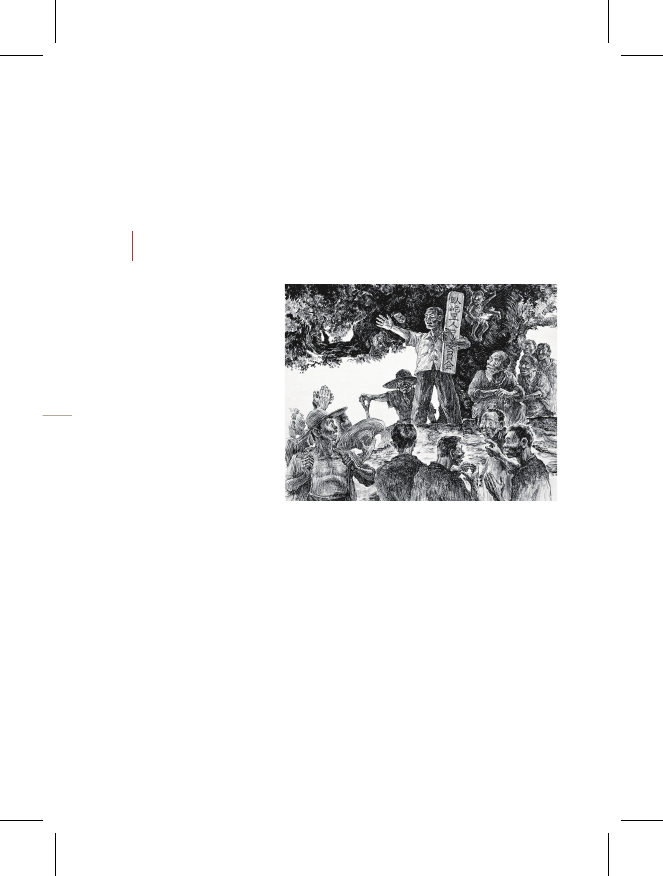
1948
2018
1948
20
09
Government rehired officers from the Japanese colonization as their
officers, instead of punishing them for collaborating with the Japanese
Empire. This policy antagonized the Koreans even further.
Political situation in Jeju after the liberation
After liberation, the
movement to build a
new country was acti-
ve in Jeju as well. While
the People's Commit-
tees in other regions
were dissolved by the
US Military Govern-
ment or changed its
name, the Jeju People's
Committee remained undiminished and maintained strong social co-
hesion. It was because the power of pro-Japanese was relatively weak
in Jeju, and many people who joined in the independence movement
against Japanese imperialism came back to their hometown and then
became members of the People's Committee. In Jeju, 80% of the farmers
were independent farmers while the country's average was 40%; thus,
class conflict also was not that serious. In addition, Jeju had a strong
community culture that made it easier for the People's Committee to be
an autonomous organization.
People’s Committee by Kang Yobae

10
1948
2018
1948
20
Most of all, the People's Committee put a lot of effort in education,
and actively participated in establishing schools. As is clear, the People's
Committee showed its leadership in Jeju after independence. In a larger
sense, the US Military Government ruled the country, but the People's
Committee had more influence in people’s lives on the ground. Therefo-
re, the US Military Government considered the committee an important
partner, and sent official documents to the People's Committee as they
did to public offices. E. Grant Meade, an officer from the US Military
Government, said “The Jeju People’s Committee was the only political
party in the island and the only organization acting like a government.”
However, as time went by, conflicts between the US Military Govern-
ment and the People's Committee were mounting. Instead of fully enjo-
ying their independence, people faced the situation in which the same
vicious police officers and corrupt public officers under the Japanese
colonization continued their positions under the US Military Govern-
ment. The conflict became serious on 1 March 1947, the so-called “March
1 shooting incident” at the anniversary of the Independence Movement
of March 1st, 1919.
In every aspect, the Jeju People’s Committee was
the only political party and the only government in Jeju island.
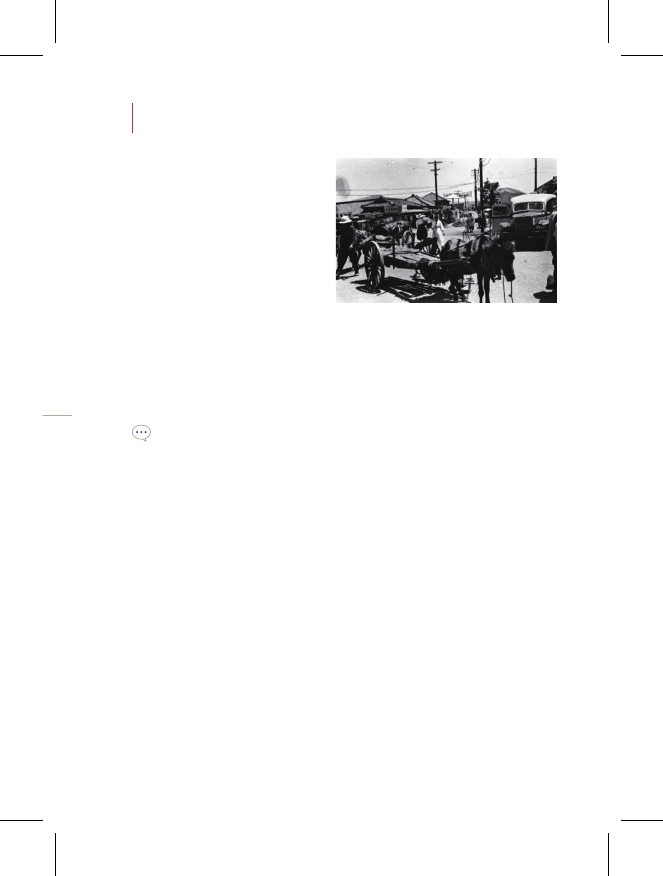
1948
2018
11
1948
2018
Jeju people’s lives after the liberation
Generally, people are inter-
ested in their daily lives rather
than politics. If their lives are
happy, people normally do
not care much about politics.
However, at that time, life was
harsh for Jeju people. After the
independence, around 60,000 people, who went to Japan during the co-
lonization to earn money, came back to Jeju. As a result, jobs were scarce
and the society was unstable.
"After the liberation, many people who left their hometown as workers,
forced labour, conscription came back to Jeju with a lot of expectations. But there
was no way to earn money in Jeju. Some people say that the Jeju's April 3rd
occurred because of the South Korean Labor Party, but that was a secondary
reason. People resisted because even after the liberation, pro-Japanese were not
punished, no jobs were available and corrupted police suppressed them."
- Testimony by Kang Soon-hyun (Oh-hyun Middle School teacher, then 27-years old)
Even worse, when people came back to Jeju from Japan, the US Mili-
tary Government did not allow them to bring money that they earned
in Japan. During Japanese colonization, daily necessities were imported
from Japan, but this was not possible after the liberation. As a result, Jeju
people's economic situation became dire. Moreover, during the summer
of 1946, cholera broke out in Jeju and there were around 50 patients
Downtown Jeju after liberation

12
1948
194
daily, in addition to heavy drought which resulted in a shortage of food.
Under this severe situation, corrupted officers from the Japanese coloni-
zation kept their seats in the US Military Government and continued to
exploit the people.
Jeju people were outraged because of this injustice. Most of all, young
people were conscious of the unfair society, and many others joined the
cause.
Commemorating the Anniversary of the Independence
Day Movement of March 1st, 1919 in 1947
Conflicts became visible on the 1 March 1947, the day of the so-called
“March 1 shooting incident” at the anniversary of the Independence
Movement of March 1st, 1919. This tragic incident triggered the April 3rd
Uprising and Massacre.3)
On 1 March 1947, the commemoration ceremony was held in various
places in Korea, including Seoul. In Jeju, “the 28th anniversary of the In-
dependence Movement of March 1st, 1919” was held at the Buk Elemen-
tary School in Jeju-si. Unlike in Seoul, where the left wing and right wing
groups had two separate ceremonies, there was only one ceremony in
Jeju. By that time, there was no division between the left and the right in
3) On 1 March 1919, independence uprising movement against the Japanese colonization was
held across the Korean peninsula. This was one of the most important momentum in the
independence movement.
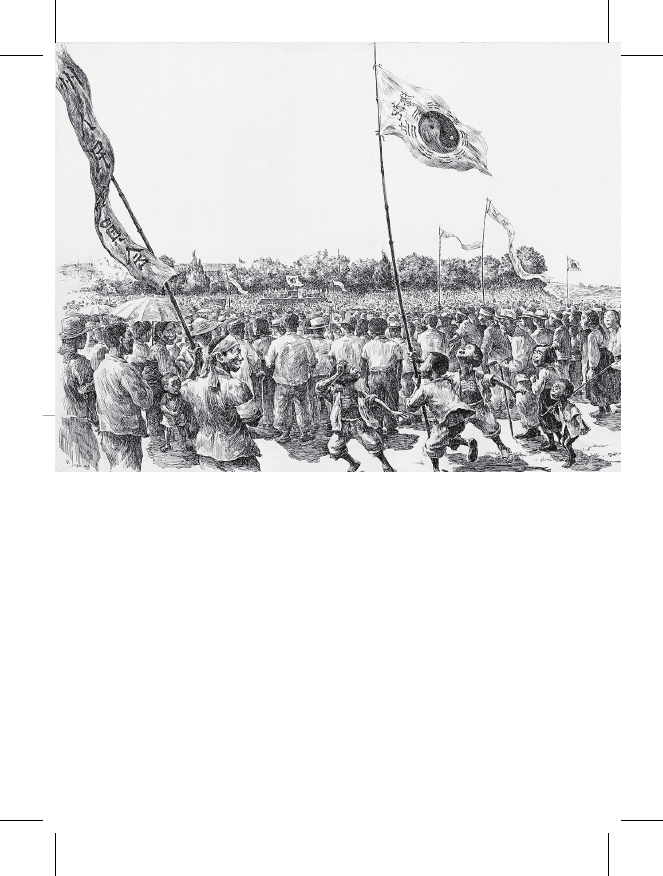
1948
13
1948
Liberation by Kang Yobae
Jeju. The unprecedented number of people gathered in Jeju, calling for a
real independence and a better society.
As the situation worsened even after independence, people tried to
overcome the difficulties by following and remembering the spirit of
resistance against Japanese colonization in the past. That was the March
1st Independence Movement commemoration ceremony in Jeju.
Around 30,000 people gathered at the Buk Elementary School with
the slogan, “Let's achieve Unification, Independence with the spirit of
the March 1st.” The Korean people knew that the reason they were su-

14
1948
2018
1948
20
Mounted police officers of the US Military Government
at that time
ffering even after indepen-
dence was because foreign
powers were dominating the
country's fate. Also, Koreans
worried about the division of
the country because of the
US and the Soviet Union.
Since the division of the
country would bring war,
they called for unification and independence. In other words, Koreans
believed that if they were able to establish an independent country wi-
thout foreign powers, then social conflicts would be resolved naturally.
A shooting incident on 1st March triggers
the April 3rd Uprising and Massacre
The tragic incident happened when the ceremony ended. Around
2pm, after the ceremony at Buk Elementary School, people marched
toward Jeju Gwandeokjeong Pavilion. When people marched west of the
Gwandeokjeong Pavilion, a boy was hit by a mounted police officer. The
police did not pay attention to the injured boy and left, which resulted
in people's outrage. Outraged people followed the mounted police and
threw stones at him.
At 2:45 pm, shots were fired. When the marching crowd left the site
and ran after the mounted police who was running toward the police

1948
2018
15
1948
2018
station, police officers at the
watchtower of the police sta-
tion fired shots towards the
crowd. As a result, 6 civilians
were killed and 8 were injured.
But by this time, no one imagi-
ned that this shooting incident
Killing by Kang Yobae
would trigger the April 3rd Uprising and Massacre that resulted in 30,000
deaths.
Ahead of the 1 March commemoration ceremony, the US Military Go-
vernment deployed around 100 police officers from the police reserve.
The police officers who fired the shot on the day were also part of the
deployment from the mainland.
It was definitely an overreaction by the police against unarmed people.
Most of the killed people were shot from behind, which is evidence that
the police aimed at the people who were running. One of them was a
woman carrying a baby and others were students and bystanders. If it
was a mistake, the police should have apologized and remedied the si-
tuation. Unfortunately, the police insisted that their action was in self-
defense. Moreover, the police started to arrest and detain those who ini-
tiated the commemoration ceremony of the Independence Movement
of the March 1st. People were infuriated.
Who ordered the shooting?
Was it possible to shoot at that time without
the order of the US Military Government?
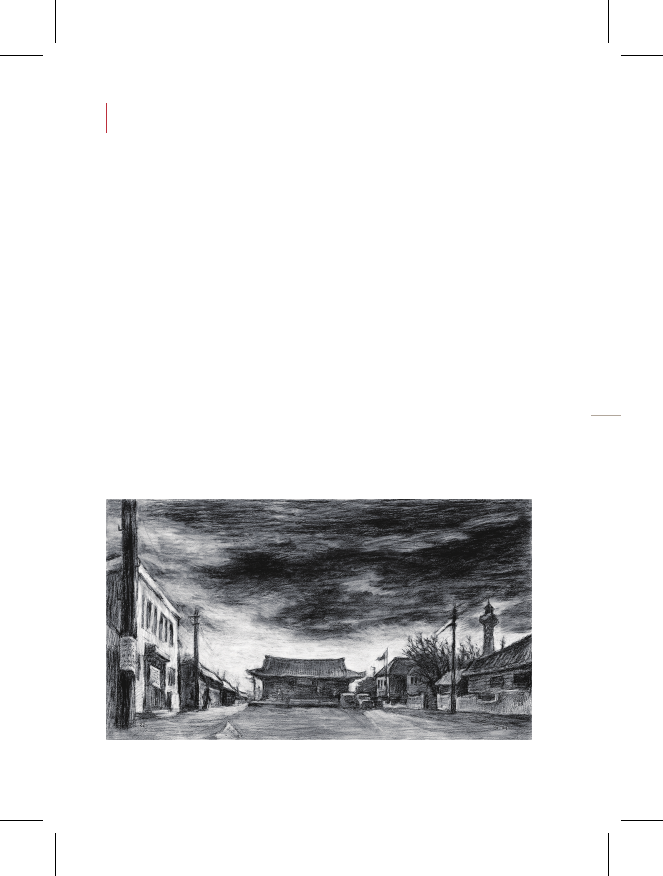
16
1948
2018
1948
20
General strike of Jeju islanders
Strong resistance and protest by Jeju people started a general strike
on 10 March 1947 that continued until 22 March. Students refused to
attend school; vendors did not sell anything in the market; even public
officers did not go to work. Even though it was difficult for them to sus-
tain their living when they closed their stores, people went on strike as a
form of protest against the shooting on 1st March.
If the US Military Government wanted to “install” democracy in Ko-
rea, then it should have listened to the Korean people's voices and agony.
Unfortunately, the US Military Government reacted in a completely
opposite manner. They designated Jeju Island as an “Island of Reds” and
indiscriminately arrested people. According to records, some govern-
ment officers at that time argued, "Originally, 90% of Jeju people are
tinged with left-wing ideology.” However, studies so far proved that this
Gwandeokjeong at the time of the general strike by Kang Yobae

1948
2018
17
1948
2018
Park Gyeong-hun
The first Jeju governor
under the US Military
Government
argument is unjustifiable and not based on facts.
The whole island was furious against the US Mili-
tary Government’s policy.
There were some people who tried to find a
rational solution from the situation. The then
Jeju governor, Park Gyeong-hun, submitted a
resignation letter as a form of protest, saying that
he would take responsibility for all troubles as
a governor. He issued a statement that included expressions such as
“independence is not complete even after the liberation," "all 300,000
Jeju people are expressing condolences to the killed people of this tragic
incident," and "for our unified independence in the future." From these
expressions, we can imagine the situation of Koreans at that time.
However, these efforts were not effective since the US Military Go-
vernment continued to suppress Jeju islanders instead of listening to
their voices. Around 550 people were arrested in a month after the com-
memoration ceremony and 245 people were detained. Before the April
3rd Uprising in 1948, around 2,500 people were arrested in a year. This
means that most of the smart young people were arrested by the US
Military Government. The Jeju April 3rd Uprising did not happen all of a
sudden. Jeju people's animosity toward the US Military Government had
piled up under this unjust environment.
Within a month, 500 people were arrested and 245 people were
detained among who joined the March 1st commemoration ceremony.
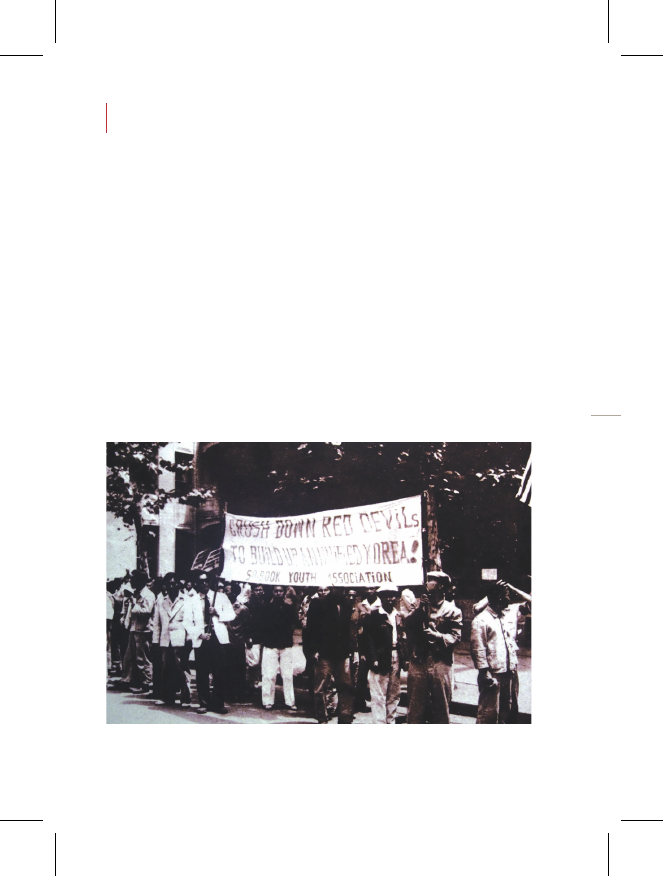
18
1948
2018
1948
20
Seobuk Youth Association and Jeju Island
Seobuk Youth Association(Northwest Korean Youth Association) was
a group of people (landowners) who were forced to leave North Korea
because of political changes, such as land reform and punishment of
the pro-Japanese groups. It was natural that they were hostile to the left
wing. They learnt that Jeju Island was the “Island of Reds,” and therefo-
re, killing Jeju Islanders was not a crime to them. Together with police
officers from the mainland, Seobuk Youth Association was deployed to
Jeju island after the 1st March 1947 incident, ordered by the US Military
Government. They were given the title of “police officers” but no wage
was given, and therefore, they looted Jeju Islanders in order to survive.
Seobuk Youth Association. During the whole period of the Jeju April 3rd Uprising and Massacre,
Seobuk Youth Association caused unforgettable trauma on Jeju islanders.

1948
2018
19
1948
2018
"When a request was made by the government to come to a region where
the leftists went wild, Seobuk Youth Association was deployed. What objective
standards could we have? One example was Jeju Island. Jo Byeong-ok(Chough
Pyung-ok), head of the police, called us as soon as the April 3rd incident happened.
He said that a big incident happened on Jeju Island and requested us to send
around 500 people, equipped with anti-communism, as riot police."
- Moon Bong-jae (head of the then Seobuk Youth Association)
Taking responsibility for the 10 March General Strike, Park Gyeong-
hun, the first Jeju governor under the US Military Government, resig-
ned. As his successor, Yoo Hae-jin(Ryu Hai-chin) assumed the position
on 10 April 1947 and he came with seven members of the Seobuk Youth
Association. Since then, until the April 3rd Uprising in 1948, around 760
members of the Seobuk Youth Association entered the Island. Later,
1,700 members were added. At the beginning, they wore police officers’
costumes and later, soldiers’ costumes.
When we found out that our schoolmate Kim Yong-cheol died at Jocheon
police box after being tortured, our anger toward the police and the Seobuk Youth
Association grew. So, we handed out brochures “No more vicious police!” We were
shocked watching people who initiated the April 3rd Uprising getting killed by the
police. It was not possible to live in my village due to the police and the Seobuk
Youth Association, so I went into the mountain in February 1948. I was a second-
year student of Jocheon middle school. I did not expect for this situation to
continue for that long. By coincidence, I met Lee Duk-koo, the second
commander-in-chief of the guerrilla unit. He used to be my school teacher and I
was happy to see him. He looked at me with an anxious face and asked me why I
was there, and not studying.
- Kim Min-joo (17-years old at that time)

20
1948
2018
1948
20
3 April 1948
Let's now talk about what happened on 3 April 1948. It was a month
before the first election on May 10, which was held by only South Ko-
reans and formed the Republic of Korea in the South. As mentioned ear-
lier, Jeju islanders were in great anguish because of the oppression by the
Seobuk Youth Association, who were above the law. The South-Korean-
only election made the Korean peninsula more restless. If the country
were to be divided into two, a war might occur. In fact, the Korean War
occurred two years later, and tensions between the North and the South
have been heightened since then. Those who invaded the police stations
on April 3rd strongly opposed the division of the country. This is how
and why the April 3rd Uprising started. On the day, 12 out of 24 police
stations were invaded and 14 were killed. Armed resistance group an-
nounced “Resist against the Oppression!”
There's no other choice between 'sit
and killed' and 'stand up and fight.
However, Jeju was not the only place where this kind of uprising oc-
curred. Many Koreans did not want a divided country after the hard-
won independence from Japan. Since a division of a country may bring
war, they refused to hold the South-Korean-only election. Therefore,
other parts of Korea also had similar uprisings. When the uprising first
rose in Jeju, people thought that the police force was enough to calm
people down and would not require an army. If various parties could
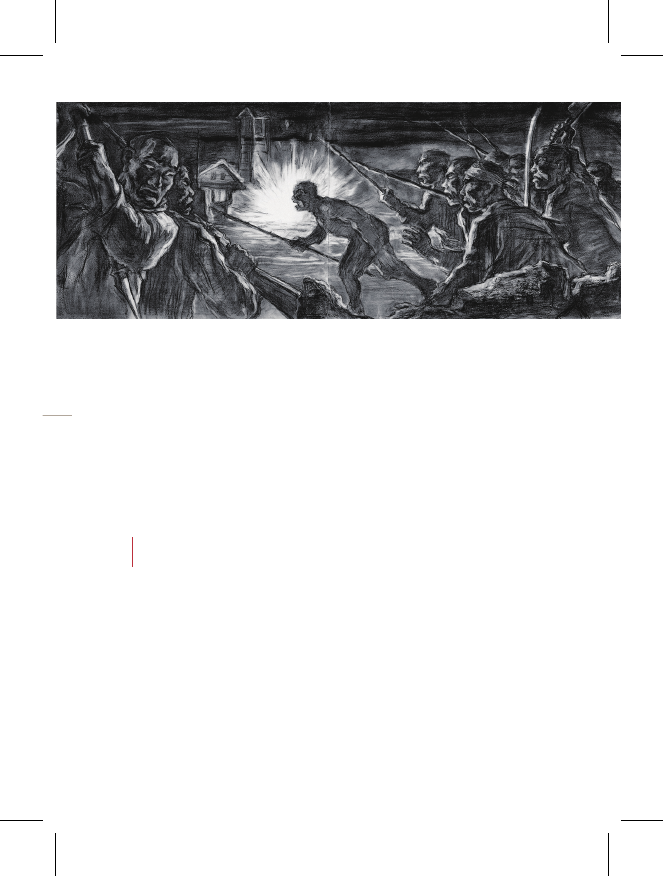
1948
2018
21
1948
2018
Attack by Kang Yobae. Imagery of the night of uprising
have solved the problem peacefully through dialogue and negotiation at
that time, the incident would not have deteriorated into a situation that
resulted in 30,000 victims. Unfortunately, severe crackdown was waiting
for Jeju islanders instead of a peaceful solution.
28 April Peace Negotiation and Arson of Ora-ri
The police under the US Military Government propagated the April
3rd Uprising as a “disturbance by communists related to the North.”
However, it was proven wrong. Even at that time, many people pointed
out that this accusation was not based on facts. Public Prosecutor Ge-
neral Lee In pointed out, “The behaviour of wicked officers of the US
Military Government was the major cause of the Incident.”
The Korea Constabulary(army) also identified that the nature of this
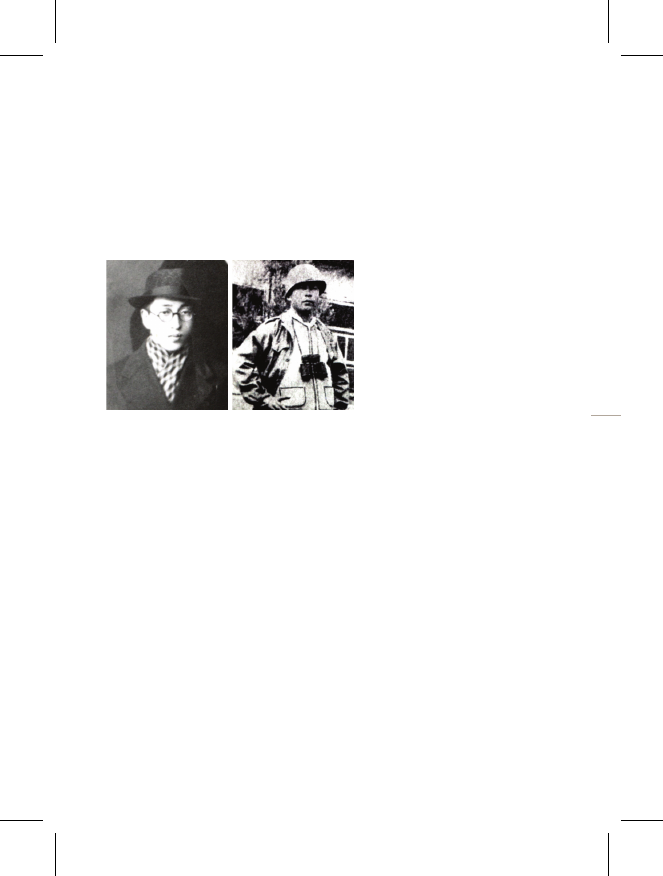
22
1948
2018
1948
20
Key people of the Peace Negotiation
Kim Dal-sam(left), Kim Ik-ryeol(right)
incident was a conflict between Jeju islanders and the police and Seobuk
Youth Association, hence, they were reluctant to intervene. However, as
time went by, the Korea Constabulary had no choice but to crack down
on Jeju islanders under the command of the US military army. At the
end of April, the US Military Government ordered the army to crack
down on the April 3rd Uprising.
a negotiation table was set up with the armed resistance group who
initiated the April 3rd Uprising. On 28 April 1948, the 9th Regiment com-
mander Kim Ik-ryeol and the organization department head of armed
resistance group Kim Dal-sam (his real name was Lee Seung-jin) finally
reached a significant and successful conclusion after a heated debate.
They agreed upon completely ceasing battles within 72 hours, gradual
disarmament and guaranteed safety of armed resistance group.
If these agreements had only been implemented, the April 3rd Mas-
sacre would not have happened. However, sabotage actions to break the
Peace Negotiation started on 1 May. On 1 May, only three days after the
Peace Negotiation, unidentified men, disguised as the armed resistance
group, set fire in Yeonmi Village, Ora-ri. This was the so-called Arson of
Meanwhile, Kim Ik-
ryeol(Kim Ik-yul), the
Commander of the 9th
Regiment tried to solve
the situation peacefully.
As a result, on 28 April,
less than a month after
the April 3rd Uprising,
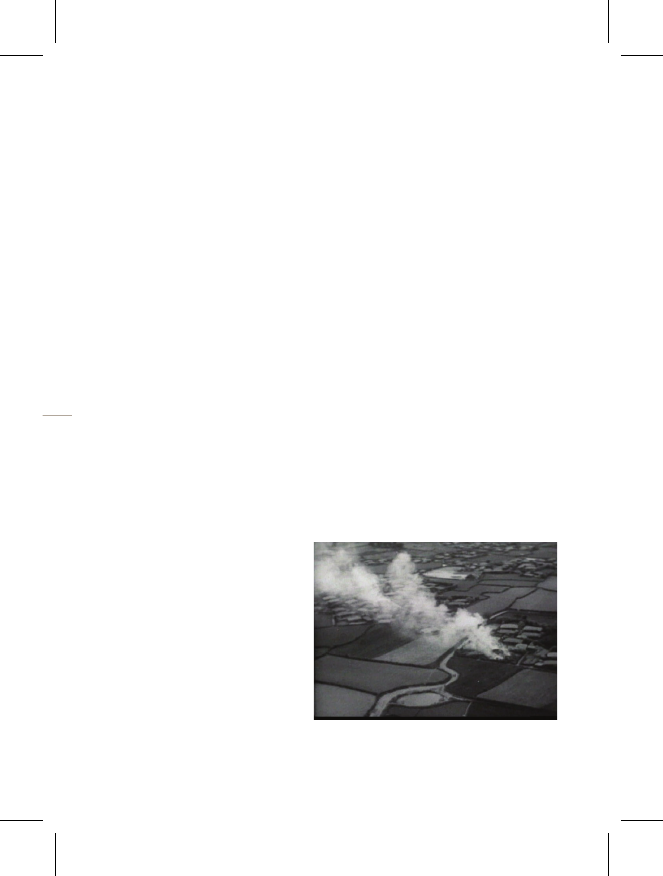
1948
2018
23
1948
2018
Ora-ri. The US Military Government documented this arson from the
sky and the ground, and it soon became a propaganda documentary film
titled Cheju-Do May Day. It was later found that the fire was set by the
right-wing Seobuk Youth Association but at that time, this arson was
fabricated as a fire set by the armed resistance group to break the agree-
ment, and it had a decisive effect on the annulment of the agreement. It
was clear that the US Military Government was behind this fabrication.
On 3 May, civilians who came down from the mountains, trusting the
Peace Agreement, were shot by police officers who disguised themselves
as the armed resistance group. It was planned so that the armed resis-
tance group could be blamed for breaking the Peace Negotiation with
the aim to annul the agreement.
The US Military Government dismissed Kim Ik-ryeol who realized
what was going on and strongly criticized it. Park Jin-gyeong(Park Chin-
kyung), a hardliner, was appointed as the Regimental Commander,
replacing Kim Ik-ryeol. Park Jin-gyeong served as a second lieutenant of
the Japanese army during the Japanese colonial period and was favored
Arson of Ora-ri It was later found that it was fabricated by
the right wing group.
by William F. Dean, head
of the US Military Gover-
nment. His position was
completely different from
that of Kim Ik-ryeol. At his
inauguration, he said “In
order to suppress a riot in
Jeju, it is fine if 300,000
Jeju people are victimized.”

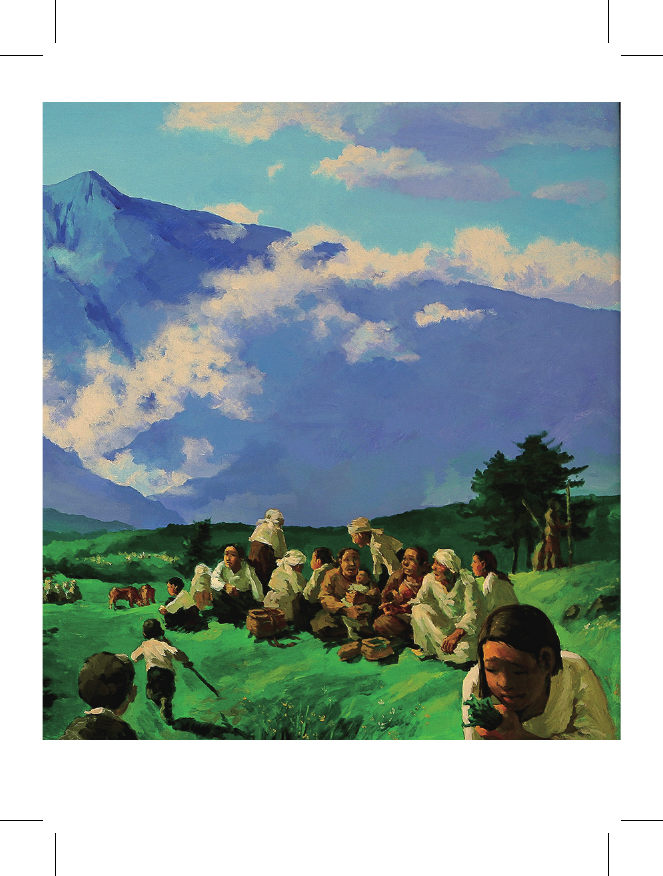
People of Halla Mountain by Kang Yobae.
Imagery of people who climbed the mountain to boycott the 10 May General Election
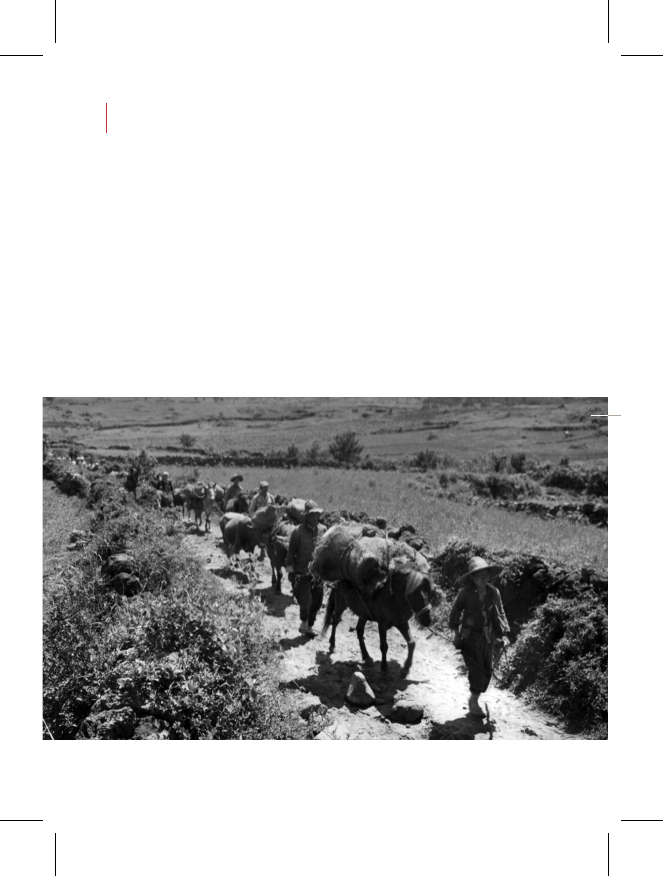
26
1948
2018
The breakdown of the May 10 General Election
On 10 May 1948, a general election was held for the first time in the
South. To establish a government, it was necessary to elect parliamen-
tarians to enact the Constitution. As mentioned earlier, some people
were concerned that the South-Korea-only election might bring war in
the future and thus refused to hold such an election. Kim Koo, the last
Premier of the Provisional Government of Korea during the Japanese
colonization and later a Korean nationalist politician, said “Even though
I collapse on the 38th parallel, I cannot cooperate with the establishment
of a divided country.”
People who refused to vote and entered the mountain are walking down the mountain
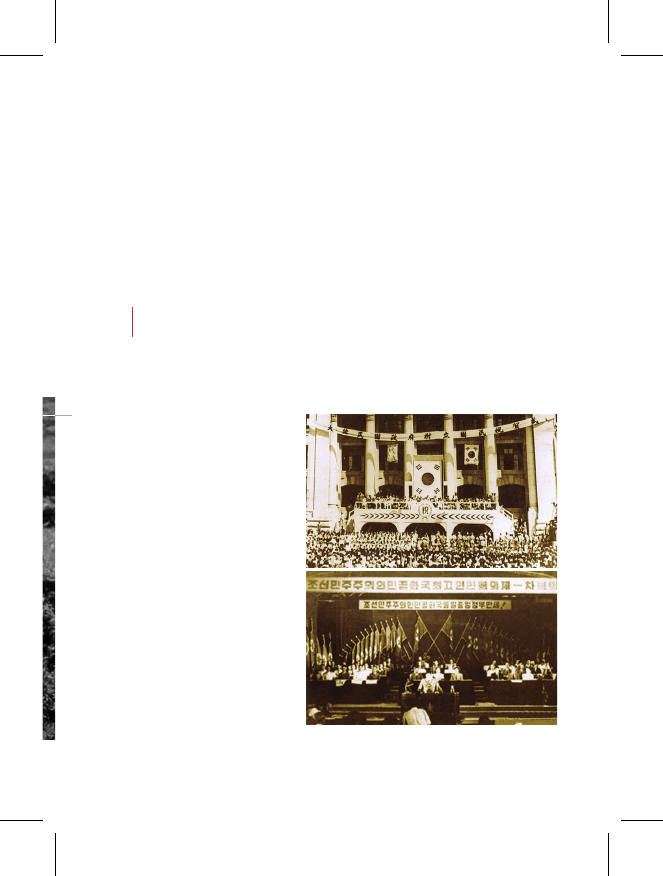
27
1948
2018
This was also the known cause of the April 3rd Uprising by the Jeju
chapter of the South Korean Labor Party. For this reason, the 10 May
election was not held properly in Jeju. Two out of three constituencies
in Jeju boycotted the General Election and therefore, only one parlia-
mentarian was elected instead of three. The breakdown of the 10 May
General Election heralded a tragic event in Jeju.
Two governments in one country
Even though the General Election to elect members of the Consti-
tuent Assembly was not properly held in Jeju, election was held in other
parts of the country.
Members of the Consti-
tuent Assembly were elec-
ted and they announced
the first Constitution was
proclaimed on 17 July 1948.
Against this backdrop,
the Republic of Korea was
formed on 15 August 1948
and the first president was
Rhee Syng-man. Then the
North rapidly declared
their own government.
Democratic People’s Re-
Two separate governments were established on the
Korean peninsula

28
1948
2018
1948
20
public of Korea(North Korea) was established on 9 September 1948.
In any case, it was an important chapter in Korean history. Unfortuna-
tely, this history became a horror for the Jeju people. After establishing
the government, Rhee Syng-man wanted to remove any obstacles of his
legitimacy. For him, the Jeju islanders who strongly resisted against the
South-Korea-only election were a nuisance.
At the same time, a process of the United Nations approving the new
government was scheduled in December 1948 and this made Rhee im-
patient. To be approved on an international level, domestic issues had to
be cleared up by December 1948. The US Military Government, which
was supposed to leave Korea by the end of 1948, was also running out of
patience and wanted to clear up issues before its withdrawal. Unfortu-
nately, what they chose was total destruction, instead of peace.
Era of madness since the fall of 1948
Severe crackdown started from 17 October 1948. Song Yo-chan(Song
You-chan), who was appointed as the 9th Regimental Commander, an-
nounced a decree to “impose quarantine on the area further inland than
5km from the coastline of Jeju Island and in the mountainous area. Tho-
se who defy the quarantine, no matter what the reason is, will be recog-
nized as rioters and be shot to death.” This was a decree that seriously
violated human rights and killed Jeju people without any legal process.
This also violated the Convention on the Prevention and Punishment of
the Crime of Genocide(Geneva Convention), which stipulates “people

1948
2018
29
1948
2018
who do not take part in the fighting should be protected and respected,
and must be treated humanely” to protect prisoners of wars and civi-
lians.
5km
Quarantine
Quarantine 5km from the coastline of Jeju
On 17 November of the same year, the Martial Law was declared.
Originally, the Martial Law was a temporary measure to allow the army
to take control of judicial, legislative and administrative powers of the
country under the state of emergency. It is still doubtful that Jeju island
at that time was at that level of crisis to justify Martial Law.
Even though the announcement of Martial Law was justified, it
was(and still is) illegal to kill
people without proper legal
process. However, most
villages situated in the
middle of Mt. Halla were
burnt down and villagers
who were not able to leave
the villages were brutally
killed. Women, children, Rhee Syng-man encouraged the army dispatched to Jeju
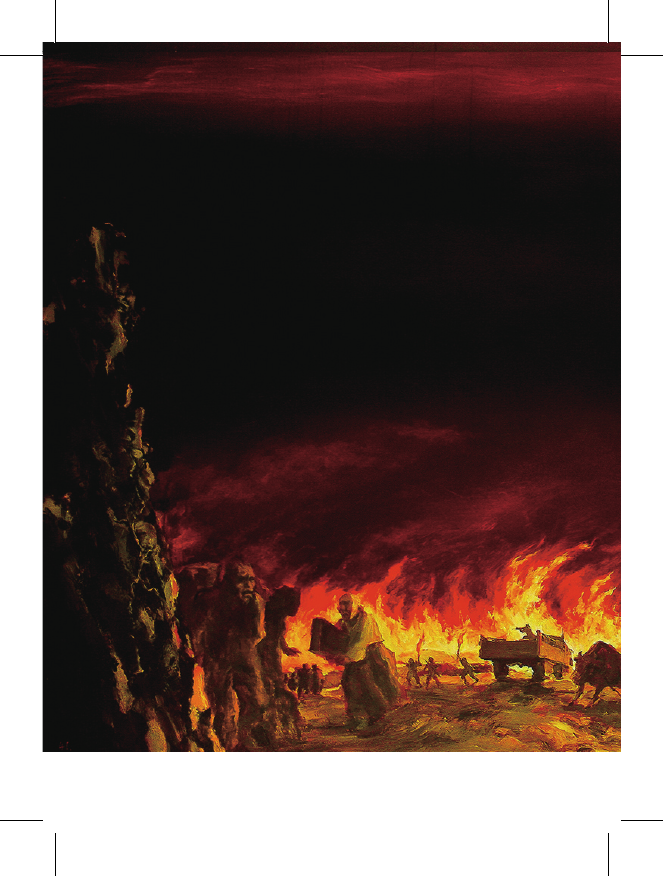

Cry of Sky by Kang Yobae.
Imagery of people who were forced to leave their village under the Operation Scorched Earth
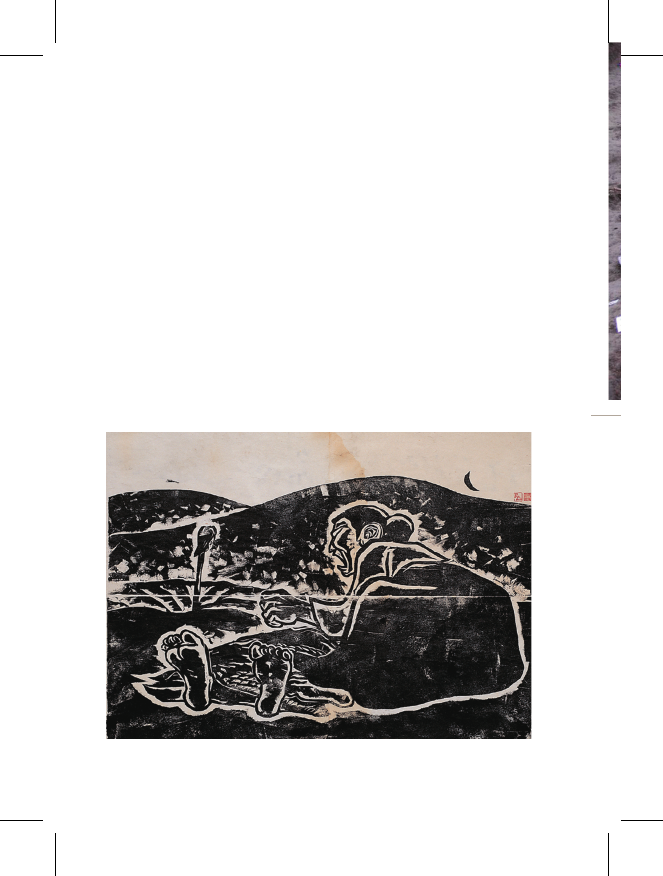
32
1948
2018
1948
20
and the elderly were no exception. These killings were illegal even
during the war, and this merciless carnage continued for a while even
though it was not during the war. Cruel and brutal killings at that time
are too horrendous to describe in this booklet.
At the beginning, the number of armed resistance identified by the
military and the police was around 500. However, to crack down on 500
people, they sacrificed 30,000 people. During that process, evil and uni-
maginable acts were committed. This is why people call this period “an
era of madness.” The era of madness continued until the spring of 1949.
Young people who wished to clean up deep-rooted evil from Japanese
colonization and establish a unified country escaped to the mountain
areas, smuggled themselves into Japan, or got killed if they stayed in Jeju.
Wailing by Park Kyung-hoon

1948
2018
33
1948
2018
National Day of Commemoration, April 3rd
The Jeju April 3rd Uprising and Massacre was a tragic incident in
which the casualties are second only to the Korean War in modern Ko-
rean history. Most Jeju people are directly related to this tragic history.
Even so, the April 3rd Uprising and Massacre has been a taboo for a
very long time. Those who were in or close to power were responsible
for this tragedy, and therefore, systematically concealed the event. Deep-
rooted evil from the time of Japanese colonization were still in existence,
and it managed to silence the people.
Excavation of remains at the Jeju International Airport.
This excavation project started 60 years after the massacre. 127 bodies were found in 2007 and
261 bodies were found from 2008 to 2009. Some bodies are still buried under the airport.
The third excavation is scheduled in 2018.
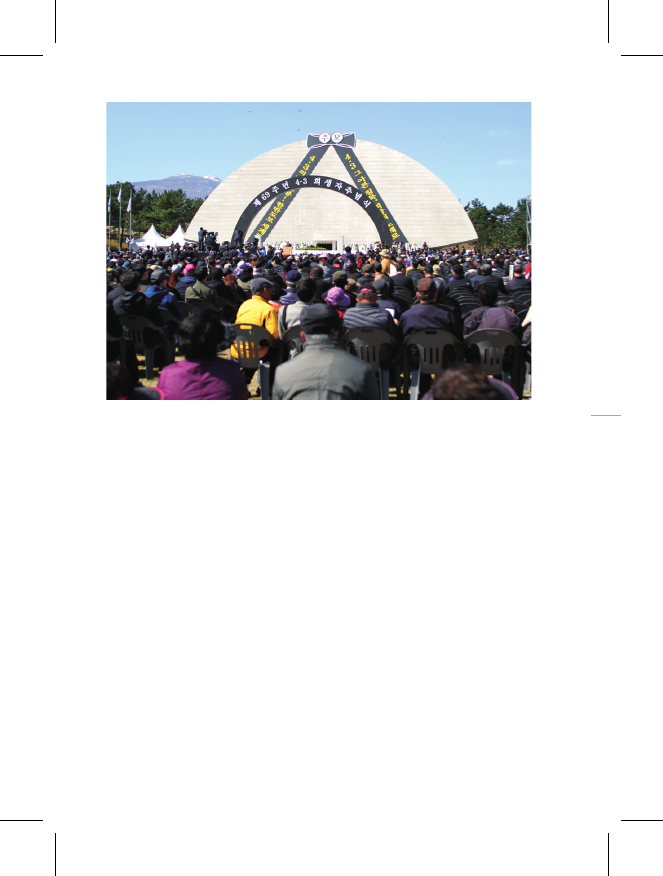
34
1948
2018
1948
20
Eventually, history reveals the truth. Forced silence cannot last fore-
ver. Many people courageously exerted efforts into raising voices of the
Jeju people related to the April 3rd Uprising and Massacre. Crackdown
by the government was expected in the process of seeking the truth of
the April 3rd Uprising and Massacre, so great courage and sacrifice were
required to find the truth.
June Democratic Uprising in 1987 which served as a momentum for
democratization in South Korea also motivated people to talk about the
April 3rd Uprising and Massacre. On 3 April 1989, people held a comme-
moration ceremony of the April 3rd Uprising and Massacre in public for
the first time. These fearless efforts shed light on the truth of the April
3rd Uprising and Massacre.
Memorial ceremony for the victims of the April 3rd Massacre. Every year, a memorial ceremony for
the victims of the April 3rd Massacre is held at 10am on 3 April at the April 3rd Peace Park.
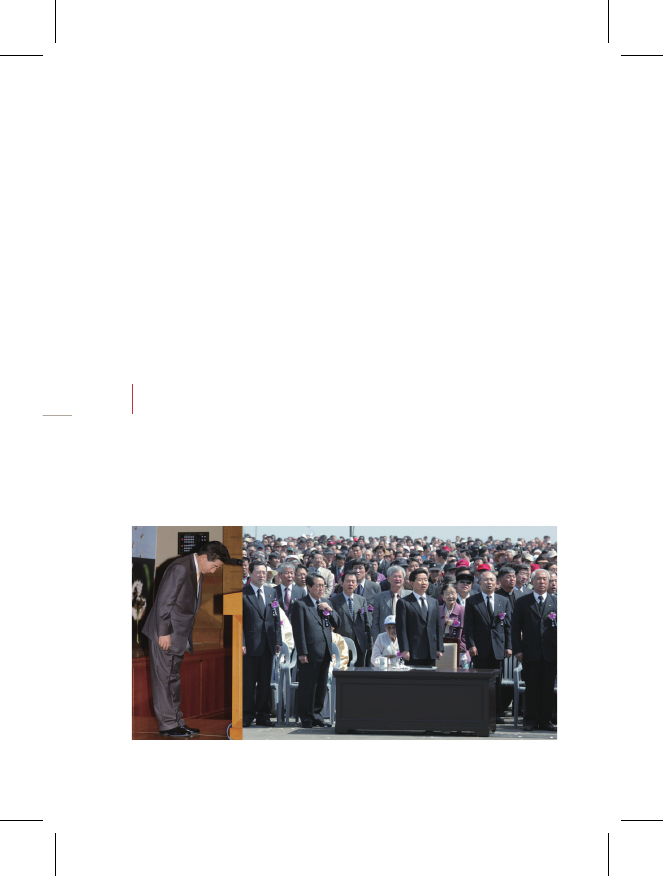
1948
2018
35
1948
2018
The efforts of ordinary but courageous people resulted in the <Special
Act on Discovering the Truth of the Jeju 4·3 Incident and the Restoration
of Honor of Victims> of 2000 and <The Jeju 4·3 Incident Investigation
Report> of 2003. Soon after, the then President Roh Moo-hyun made an
official apology by saying “I, as the President, holding the responsibility
of government, accept the Committee’s suggestion and truly extend my
official apology for the wrongdoings of those national authorities in the
past.” In 2014, Park Geun-hye administration designated April 3rd as the
National Day of Commemoration.
The April 3rd Uprising and Massacre is not over yet
Sadly, the April 3rd Uprising and Massacre is not yet resolved. Many
obstacles are still found in different parts of the country. Even though
Koreans impeached former President Park Geun-hye, rooted corruption
Official apology by the former President Roh Moo-hyun

36
1948
2018
1948
20
still continues to exist.
This applies to the April
3rd Uprising and Massacre.
No one was punished for the
vicious and tragic past as a
perpetrator. Worse yet, it is
not even clear who the said
perpetrators are. For a long
time, those who are responsible for the massacre denounced the spirit
of the April 3rd Uprising and Massacre as “communism” instead of apo-
logizing for what they did. No proper acknowledgement was given to
those who were killed while protesting against the division of a country
and war. They are simply mentioned as “victims” or even considered as
offenders against state power. They were even framed as "reds" and as is
clear, being called "reds" justified all illegal actions against them.
What Jeju islanders wanted to achieve was a united
and peaceful country without the threat of war.
Unfortunately, their efforts failed and now, the Korean peninsula is
one of the countries with the highest risk of a possible war. The political
situation is unstable because we do not know when a war might break
out. If a unified country had only been established 70 years ago, these
tensions and anxiety would not exist. This is why the April 3rd Uprising
and Massacre is an ongoing issue.
By any chance, do you know how much the South Korean annual
Unnamed Monument. The unnamed monument is
exhibited at the entrance of the April 3rd Peace Park
exhibition hall.

1948
2018
37
1948
2018
national defense budget is? As of 2017, it is around 40 trillion Korean
Won (=40 billion USD). Can you even imagine how big this number is?
40 trillion Korean Won equates to a salary for 1 million people with an
annual income of 40,000 USD. Currently, youth unemployment rate
is very high in South Korea. If the country was not divided into two, we
could have used a large portion of the national defense budget for social
welfare. Then, people’s lives could have been filled with more happiness
than now.
The April 3rd Uprising and Massacre is still ongoing. It is between
people who insist on “starting a war” and “no war.” Which side are you
going to be on?
Remember the Jeju April 3rd Uprising and Massacre
The Jeju April 3rd Uprising and Massacre started from the 1st March
commemoration ceremony in 1947 and it was an expression of Jeju
Islanders’ aspiration for a unified country. It was not only those of Jeju
Islanders but of all Koreans. At the same time, the Jeju April 3rd Uprising
and Massacre is a tragic history where people’s right to life was brutally
violated and destroyed by the state forces. It reminds us of the impor-
tance of people’s lives and human rights.
Jeju Island which suffered from the conflicts between different ideo-
logies and went through a catastrophic tragedy during the Cold War
should be reborn as the island of peace. The Jeju April 3rd Uprising and
Massacre must be remembered to avoid repeating the tragic past.

38
1948
2018
1948
20
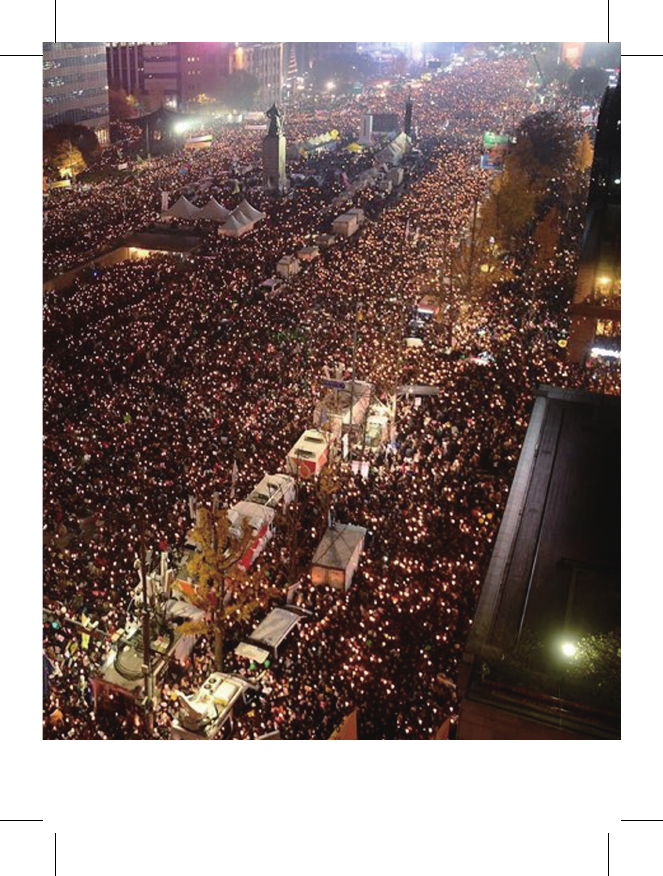
1948
2018
39
1948
2018
Candlelight Revolution in South Korea, 2016
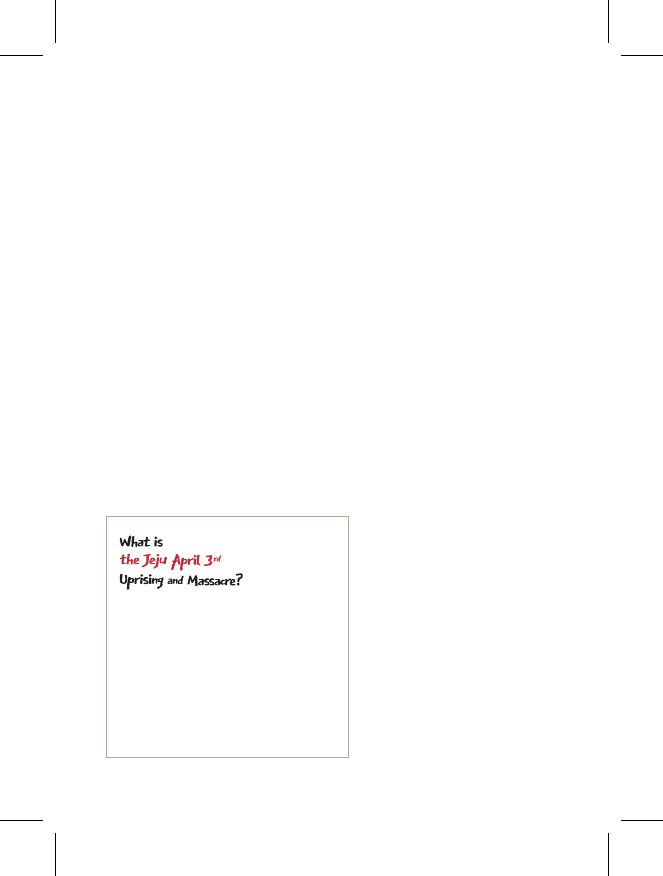
Publication date March 2018
Published by
Memorial Committee for the 70th anniversary of
the Jeju April 3rd Uprising and Massacre
Designed by
GAK
43jeju70@gmail.com
Homepage
www.4370jeju.net
www.facebook.com/43jeju70/
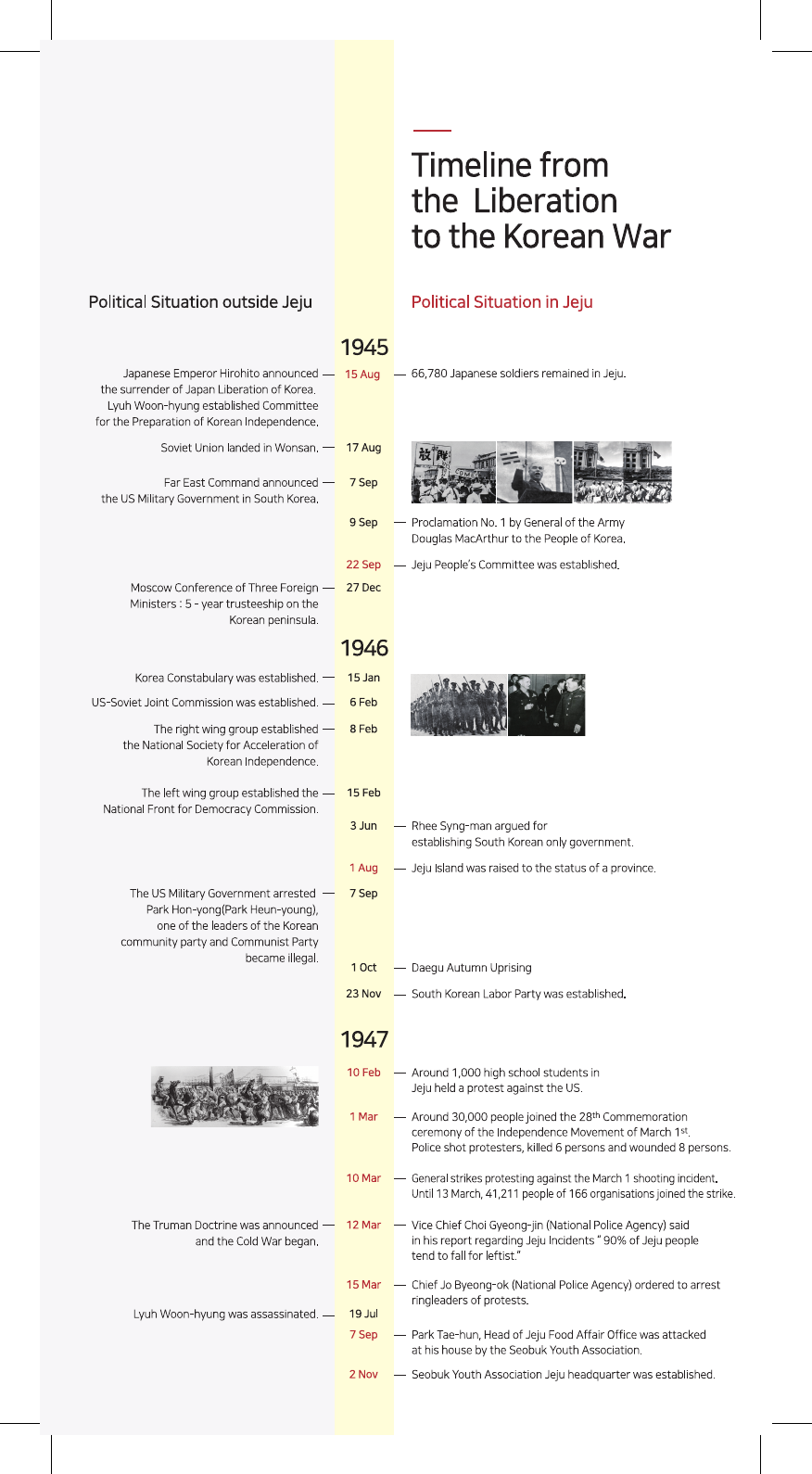
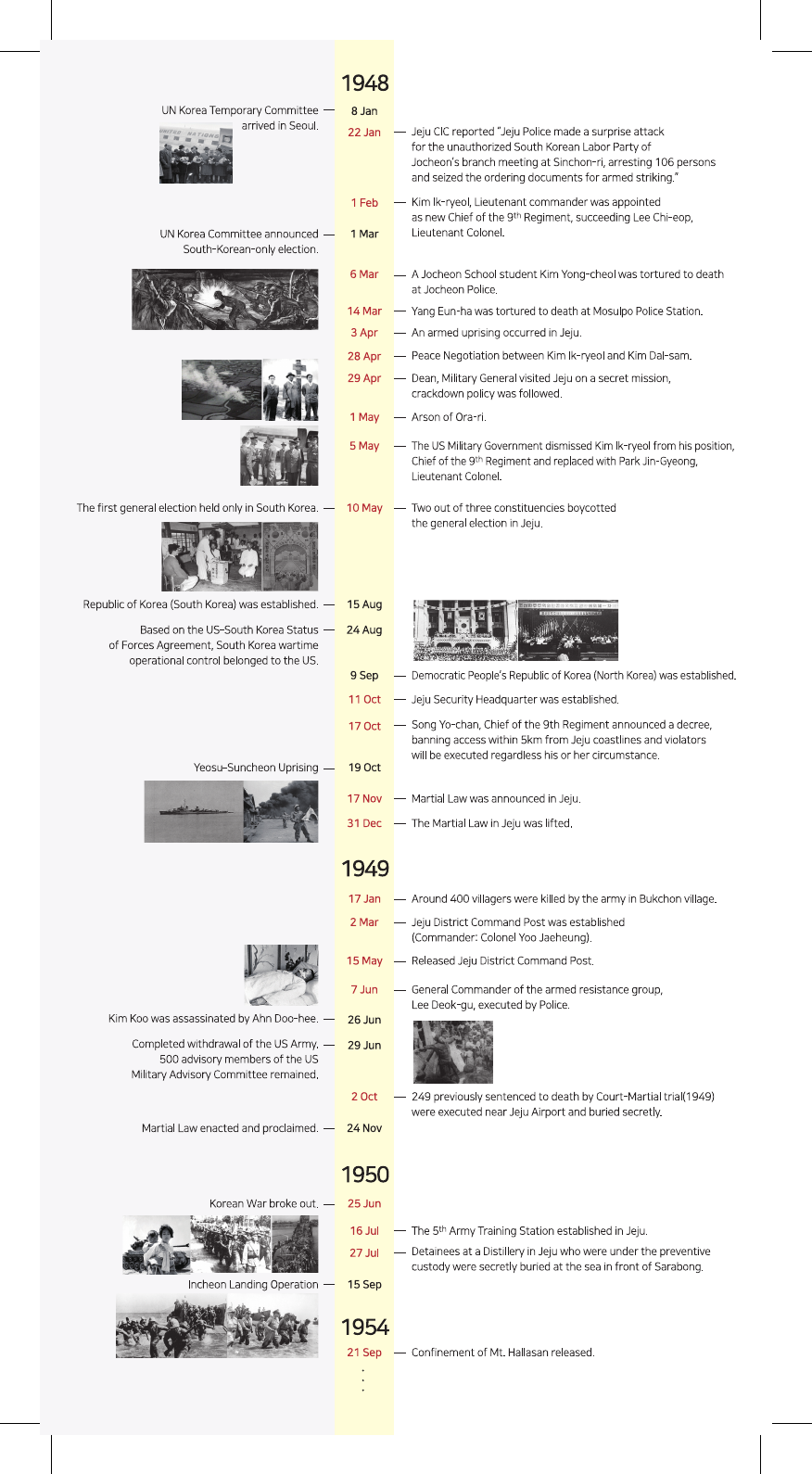
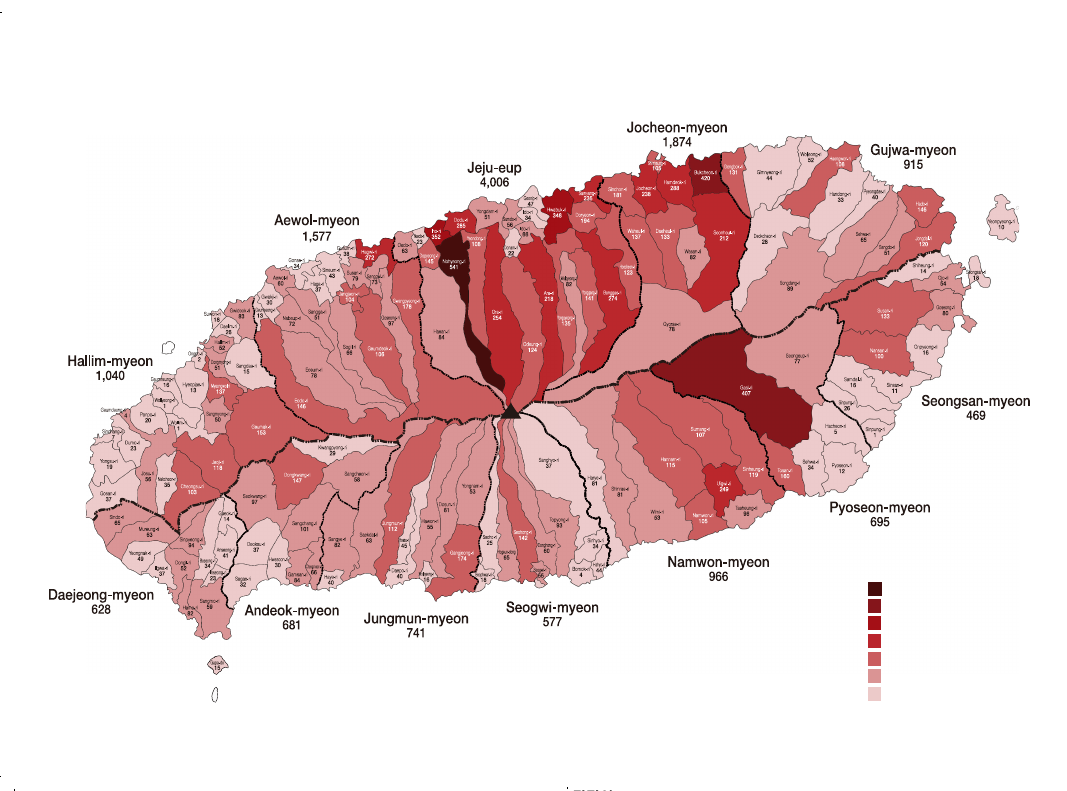
Victims of Jeju 4·3
Source: Jeju April 3rd Incident Investigation Report
Above 500
Between 400 and 500
Between 300 and 400
Between 200 and 300
Between 100 and 200
Between 50 and 100
Between 1 and 50